The SAD (S)tandard (A)merican (D)iet
The standard American diet (SAD) for many Americans is a sad one indeed. Over 90% of the diet consists of junk, with the healthy food relegated to decorations and garnishments on the plate. Obesity is now an epidemic, and this weight gain correlates with the rise of many diseases, including heart disease and diabetes.
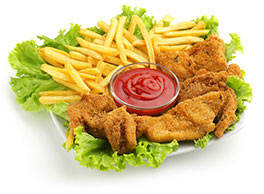
Food corporations and their savvy marketing tactics encourage people to overeat, offering food that directly conflicts with what is best for their health with the excuse that what a person chooses to eat is a matter of personal responsibility and certainly not the fault of the food corporations. The fact that their deceptive labeling techniques are created to deliberately misguide consumers seems to be lost on them (did you know that "natural flavoring" can be comprised of over 50 different chemicals combined to create a variety of anything but "natural flavors"?). The courts generally rule in favor of food companies favoring "free speech," even when many supposed "health foods" have mostly processed ingredients with only one or two ingredients in tiny quantities that are healthy.
Why do Americans spend more money on healthcare than Japan, France, Italy, Spain, the United Kingdom, Australia, New Zealand, Canada, Mexico, Brazil, and Argentina combined, and yet are much sicker? Because we have a medical system that medicates you with pills, and a government that subsidizes food that is unhealthy while providing no education on what to eat and what not to eat. People are getting heavier, sicker, and hopelessly dependent on medication to put band-aids on problems that are never addressed.
What Happened?
What exactly happened to create such a catastrophic downfall where 1 in 3 people or overweight, 1 in 4 people suffer from diabetes, and 1 in 5 people will die of cancer? Let's take a look at the 12 things that food industrialization has done to destroy a healthy food chain:
Processed & refined foods...
Frozen dinners, packaged foods, chips, crackers, protein bars, diet foods, candy, pastries, sodas, donuts, hot dogs, burgers, cookies, fried foods... the list goes on. The ingredient lists contain a collection of toxic chemicals that are not really food products at all. Refined sugar, salt, and corn are now added to almost every food group, including deli meats (try to find a package of bacon that does not contain sugar).
...Read more The processed soy of today no longer resembles the healthy, fermented soy of traditional Asian cultures. It is processed beyond all recognition of health, and has been shown to have a negative health impact on the body. ...Read more
Factory-farmed meat...
Over 99% of meat in the US is factory-farmed. If meat is not organic or raised on open pastures (or game meat such as buffalo, elk, or rabbit), then it is factory-farmed.
Factory farming is banned in other countries, yet still remains legal in the US. It contains antibiotics, steroids, growth hormones, tumors, and other items that contribute to our ill health. It also consistently engages in acts of animal cruelty on a mass scale. ...Read more
Pesticides & herbicides...
Pesticidal residue covers most of our produce. These highly toxic chemicals cannot be washed off with water (pesticides are made to withstand farming irrigation), and even if they could, they are taken up by the roots of the plant and are systemic to the entire organism.
The regular eating of foods containing pesticides has been conclusively linked to the damage of the cellular integrity of the body, and to serious chronic diseases such as autism, non-Hodgkin's lymphoma, canine malignant lymphoma, leukemia, brain cancer, among many others. ...Read more
Genetically modified organisms (GMOs)...
Genetically modified processed foods and produce are now filling the shelves, and if you live in the US, GMOs do not require labeling (in contrast to over 60 other countries including Europe, Australia, New Zealand, and Japan - all of which require genetically modified products to be clearly labeled).
Not only do they pose a serious threat to the environment, but a steady string of clinical studies outside of the US are emerging showing that GMOs can pose a serious risk to our health. ...Read more
Stress...
Severe stress can be more debilitating than a heart attack. The impact that stress has on the organs and systems of the body have been proven conclusively to have devastating consequence to our health and well-being.
...Read more Food irradiation & microwaving...
Food irradiation preserves food by exposing it to high doses of radiation in the form of gamma rays, X-rays, or electron beams to kill bacteria. Changing the molecular structure of the food not only damages the nutritional content, but alters the food itself.
...Read more Read about studies which conclusively show that microwaving food not only destroys or damages its nutritional content, but it also has a negative impact on our blood and various systems of the body. ...Read more
Food from China...
When we buy foods either sourced from or prepared in China, we take a serious risk with our health. Some of the biggest food recalls in history are a result of poor quality control of foods from China, with under 3% of all food from China inspected.
...Read more Deceptive marketing tactics...
Thanks to lax labeling laws, food manufacturers themselves are left to their own devices to create misleading advertising, using words such as "healthy" and "heart healthy" on foods that are anything but. They use questionable health and nutrition claims to make people buy food they "think" is healthy that in reality is not. Marketing to children also became deregulated (marketing processed food to children is illegal in many other countries).
Large portion sizes...
Processed junk food is cheap, and the portion sizes are growing larger. People eat more today than ever before.
Pressure for profit...
Wall Street monitors corporations and their profit, and food companies are expected to turn a large profit every 90 days. This places a tremendous pressure on these companies who then use various marketing tactics to heavily influence our eating habits.
Government subsidies for processed food...
The government subsidizes farmers to grow large quantities of food such as corn and soy, which are then heavily processed and now form a backbone for our food chain. Farmers growing organic, healthy produce receive no such subsidies.
Supplements...
Millions of Americans now pop all sorts of supplement pills and protein powders, most of which are synthetic and many of which cause more harm than good. Clinical studies have shown that synthetic folic acid, vitamin A, vitamin E and other synthetic nutrients have a toxic effects on the body. Vitamin C has been found to have little effect on the body when in synthetic supplement form.
Why Many Americans Choose the SAD Diet
They Are Unaware of the Health Consequences
Many consumers choose the SAD diet because they are completely unaware of just how unhealthy it is. They do not make the correlation between the dramatic increase in chronic diseases and the industrialization of our food chain. They are unaware that the top 3 killer diseases (diabetes, heart disease, and obesity) are all entirely preventable by simply making different dietary choices. Most processed junk food is high in unhealthy fat, high in sugar and salt, low in fiber, and contains excess condiments such as butter, mayonnaise, dressings, mustard, and ketchup which themselves are highly chemicalized and/or high in calories. To add insult to injury, it is devoid of healthy nutrition.
Deep down, the average American may know that their food choices are not the best, but they are genuinely unaware that their chances of developing a chronic disease or illness rises exponentially on such a diet. Sadly, the realization often sets in only when they or those they love become sick, and when the damage can sometimes be irreversible.
They Fall Prey to Irresistible Advertising
Americans have a tendency to trust food packaging to be honestly advertised, and assume that their government would protect them from dangers in their food supply. But many food corporations routinely lie on their package labeling, and lax labeling laws do little to protect the American public. Some of the chemicals in American food are so unhealthy that they are banned by governments in other countries. Even though our food habits are the biggest contributing factor to obesity, diabetes, and heart disease, the government is not stepping up to the plate to educate and promote a healthy lifestyle free of processed and chemicalized food. On the contrary, it freely allows it.
Unfortunately, millions of people are exploited every day through irresistible advertising from food companies. The ads can have a very powerful psychological effect on the viewer, and some chemicals (excitotoxins) in the foods are made to create biochemical and physiological addictions. We eat when we are not hungry and are constantly encouraged by advertisements to eat more.
In a win-win for the food and pharmaceutical giants, the junk food market provides the food, which in turn contributes to the chronic diseases, which in turn keeps the pharmaceutical companies in business and America a medicated nation.
They Assume Only Fast Food Is Junk Food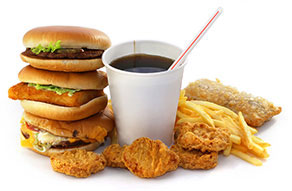
Many Americans mistakenly assume that if they do not eat "fast food," then they are not on a junk food diet. But junk food is not just from fast food joints. It consists of ALL FOOD that is heavily processed and refined. Canned, pre-packaged and frozen foods that are highly refined and contain chemicals, additives, artificial colorings and flavorings, hydrogenated oils, and refined ingredients such as sugar and bleached flour - all junk. Junk foods are the majority of foods sold in typical supermarkets. Diet drinks, sodas, pasteurized milk-based drinks and fruit drinks are also loaded with added sugar and artificial chemicals - junk. The only way to get away from them is to eat fresh foods, and if you buy packaged foods, then read the ingredient lists very carefully.
They Do not Realize It Is Addictive
Processed junk food is filled with highly addictive and stimulating flavors, sugars, and caffeine content. These addictive excitotoxins are great at hooking us in. They are the foods eaten at a football game, around a campfire, at parties, or the movies. Like recreational drugs, junk foods are recreational foods that we also come to associated with fun times. It becomes easy to see why we are chemically addicted.
They Are Unaware They Are Undernourished
The irony is that the typical American is overfed, but very undernourished. The SAD diet contains very few fresh foods, with some Americans eating none at all. It is high in the bad stuff, and completely lacking in all the healthy stuff such as vitamins, minerals, and enzymes. It is also caffeine and alcohol rich, and water poor.
It is Cheap & Convenient
Unhealthy food is cheaper to produce and has a high profit margin, which means cheaper for the consumer, which unfortunately makes it more appealing to those on a budget. It is also convenient and requires a few minutes in the microwave, or can be eaten right from a container.
SAD & the High-Stress American Lifestyle
The American culture encourages a lifestyle that is compulsive, rushed, competitive, eat-on-the-go, high-stressed and high-paced, demands instant gratification, and expects large portions. Food is often gulped down rather than chewed and enjoyed. Those not suffering the effects of their unhealthy food choices are often hooked on alcohol, tobacco, or drugs because they are so overwhelmed by their stressful lifestyle. It is easier to collapse in a heap in front of the TV. For others, there is no time to slow down - no time to simply stop. Many jump on the computer to either continue working, or play computer games all evening when they get home. Video games are now a class of addiction that has become a primary topic in family/divorce counseling.
Somewhere along the way, moderation fell by the wayside. Stress levels have created a generation addicted to anti-anxiety and insomnia medications. Sleeping and eating disorders have become par for the course, and eating a diet of junk food is a serious eating disorder. When we have a normal, healthy relationship with food, we digest and eliminate our food easily and with no digestive discomfort. In contrast, those who eat junk and/or are high stressed are bloated, thirsty, and suffer from acid indigestion, heartburn, constipation, diarrhea, IBS, and other gastrointestinal disorders. These discomforts are so common that Tums and Rolaids are now a household name.
Digestive issues are NOT normal!
They are a sign of an internal imbalance.
Compared to other cultures where there is a strong family and community dynamic that offers an emotional, spiritual, and psychological support system, many Americans are more socially isolated and disconnected from their families and suffer dysfunctional family dynamics. Many steer clear of neighbors and avoid eye contact with strangers. The sense of isolation and loneliness can be debilitating for some.
Sickness or Health: It's Your Choice
There is no doubt about the link between diet and disease. Your diet can influence your long-term health more than any other action you can take. Eating a healthier diet will not just help create a healthier body, help prevent disease, and make you feel like you are on a natural high. It also will save you thousands in the long run due to the lack of healthcare needs and medications (many of which are very toxic and can contribute to secondary conditions worse than the condition they are treating). It is only once we understand that the long-term cost of a bad diet is our health and longevity, that we can begin to make important changes.
The food corporations have no interest in creating a healthier food supply, so the change must start with each and every one of us. It begins with the choices we make. When people are educated about how important nutrition is to their health, they become inspired, enlightened, and empowered to make a difference at every check-out counter in every food store by changing the foods they buy. It is simply a matter of supply and demand. What we demand will be supplied because food manufacturers are in business for a profit and to keep the customer satisfied. When more and people demand natural and organic foods, food manufacturers and stores respond by providing more and more of them. Slowly but surely, it is happening all across the nation in even the biggest supermarket chains.
RELATED ARTICLES
Learn more about how the powerful for-profit food and pharmaceutical giants are getting richer at the direct expense of the health and well-being of the American public.
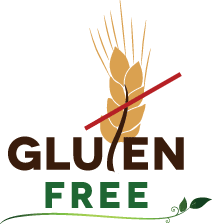



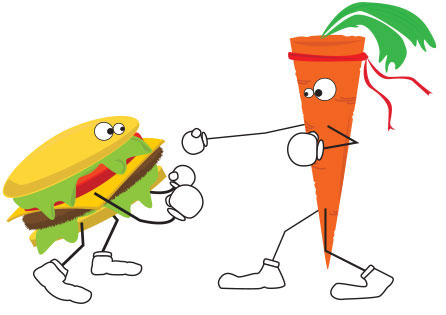 Many popular diets have massive marketing budgets, with millions of dollars spent promoting them. The reason that many of these diets are successful is not because they are healthy, but because they can afford to make themselves highly visible. In fact, some of the most popular diets out there contain some very unhealthy ingredients.
Many popular diets have massive marketing budgets, with millions of dollars spent promoting them. The reason that many of these diets are successful is not because they are healthy, but because they can afford to make themselves highly visible. In fact, some of the most popular diets out there contain some very unhealthy ingredients.  Learn more about the vibrational energy of food:
Learn more about the vibrational energy of food: As the majority of the foods on the standard American diet are highly refined foods that should be avoided, it is very important that any diet you choose educates you not only on which foods you should be eating, but about the foods you should walk away from and why.
As the majority of the foods on the standard American diet are highly refined foods that should be avoided, it is very important that any diet you choose educates you not only on which foods you should be eating, but about the foods you should walk away from and why. 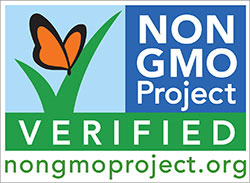 Foods that contain genetically modified ingredients (GMOs) are very different from their conventional counterpart. Their protein structure has been altered, and controlled studies in rodents have revealed that GMOs cause a variety of serious health consequences ranging from organ damage, infertility, shortened life span, allergies, and food intolerances. These are studies you will read about in Europe and other countries, and that have been withheld from the general public in the US. There have been zero long-term health studies on genetically modified ingredients, and none of them have been tested by the government.
Foods that contain genetically modified ingredients (GMOs) are very different from their conventional counterpart. Their protein structure has been altered, and controlled studies in rodents have revealed that GMOs cause a variety of serious health consequences ranging from organ damage, infertility, shortened life span, allergies, and food intolerances. These are studies you will read about in Europe and other countries, and that have been withheld from the general public in the US. There have been zero long-term health studies on genetically modified ingredients, and none of them have been tested by the government. 

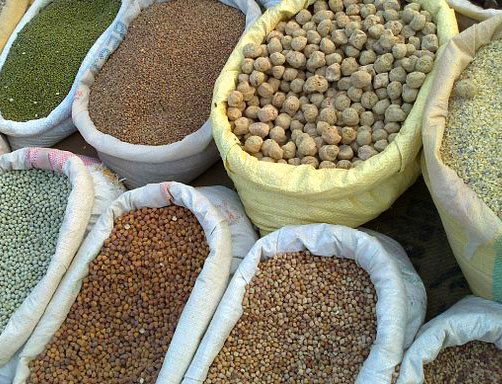 Grains are so complex and full of so many different compounds that scientists today are still largely unsure which components of the grain are responsible for what benefits. One thing we do know is that whole grains are a very important ingredient in various traditional diets of cultures devoid of the diseases we suffer from today in our westernized world. There is also evidence that cereal grains have been consumed by early humans as early as 200,000 years ago.
Grains are so complex and full of so many different compounds that scientists today are still largely unsure which components of the grain are responsible for what benefits. One thing we do know is that whole grains are a very important ingredient in various traditional diets of cultures devoid of the diseases we suffer from today in our westernized world. There is also evidence that cereal grains have been consumed by early humans as early as 200,000 years ago.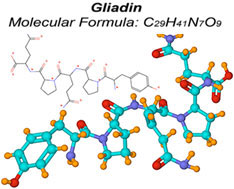 Modern wheat is very different from the wheat our ancestors ate. Their diet consisted of a more simple grain. Today, the amount of gluten protein in wheat has been hybridized to be a high-gluten, high-yield crop with most strains genetically altered. There is a
Modern wheat is very different from the wheat our ancestors ate. Their diet consisted of a more simple grain. Today, the amount of gluten protein in wheat has been hybridized to be a high-gluten, high-yield crop with most strains genetically altered. There is a 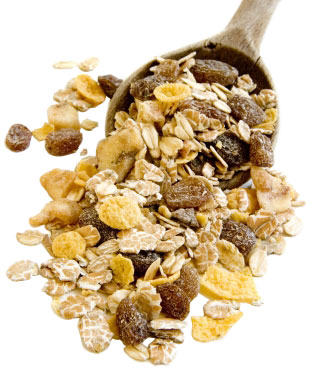 Is gluten bad? Is gluten unhealthy? In some circles, the subject borders on panic and has been blown completely out of proportion. Originally, gluten-free diets were designed to combat celiac disease, a serious autoimmune disorder that causes destruction to the intestinal tract. But today, self-diagnosing and going gluten-free for many people is becoming the "in-thing," just like popping a bunch of supplements under the illusion they enhance health.
Is gluten bad? Is gluten unhealthy? In some circles, the subject borders on panic and has been blown completely out of proportion. Originally, gluten-free diets were designed to combat celiac disease, a serious autoimmune disorder that causes destruction to the intestinal tract. But today, self-diagnosing and going gluten-free for many people is becoming the "in-thing," just like popping a bunch of supplements under the illusion they enhance health.